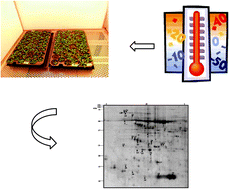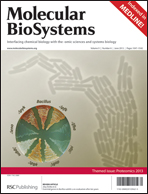Proteomic analysis of temperature stress-responsive proteins in Arabidopsis thaliana rosette leaves
Abstract
Plants, as sessile organisms, are continuously exposed to temperature changes in the environment. Low and high temperature stresses have a great impact on agricultural productivity, since they significantly alter plant metabolism and physiology. Plant response to temperature stress is a quantitative character, being influenced by the degree of stress, time of exposure, as well as plant adaptation ability; it involves profound cellular changes at the proteomic level. We describe here the quantitative variations of the protein repertoire of Arabidopsis thaliana rosette leaves after exposing seedlings to either short-term cold or heat temperature stress. A proteomic approach, based on two-dimensional electrophoresis and MALDI-TOF peptide mass fingerprinting and/or nanoLC-ESI-LIT-MS/MS experiments, was used for this purpose. The comparison of the resulting proteomic maps highlighted proteins showing quantitative variations induced by temperature treatments. Thirty-eight protein spots exhibited significant quantitative changes under at least one stress condition. Identified, differentially-represented proteins belong to two main broad functional groups, namely energy production/carbon metabolism and response to abiotic and oxidative stresses. The role of the identified proteins is discussed here in relation to plant adaptation to cold or heat stresses. Our results suggest a significant overlapping of the responses to opposite temperature extremes.

- This article is part of the themed collection: Molecular BioSystems 2013 Proteomics

 Please wait while we load your content...
Please wait while we load your content...